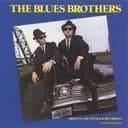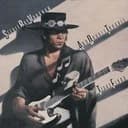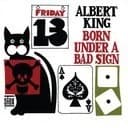The G Blues Scale holds particular significance in rock and blues history because G is one of the most common keys for guitar-based music, allowing open string resonance and comfortable hand positions on the fretboard. The blue note—C♯/D♭—creates a tritone relationship with the root (G), generating harmonic tension that blues musicians exploit through strategic placement and pitch bending techniques. In authentic blues performance, this note is rarely played "straight" but instead approached with slides, bends, or vibrato that blur the line between C (the perfect 4th) and D (the perfect 5th). This fluid pitch area reflects African musical traditions where fixed Western temperament doesn't apply, allowing for expressive microtones that convey emotion beyond what standard notation can capture. The intervallic structure—1 ♭3 4 ♭5 5 ♭7 1—provides just enough notes to outline minor harmony while maintaining the melodic flexibility that makes the blues scale so versatile across chord changes.
Mastering the G Blues Scale on Guitar
For guitarists, the G Blues Scale offers exceptional playability through familiar box patterns that sit comfortably in the lower positions of the fretboard. The most common fingering starts at the 3rd fret, allowing incorporation of open strings for rhythmic accents and drone effects. When improvising over a G7-C7-D7 blues progression, emphasize the blue note (C♯) by bending into it from C natural or sliding between C and D to create that signature "crying" guitar sound heard in classics from Albert King to Gary Moore. The scale works remarkably well over all three dominant seventh chords in the progression, eliminating the need to change scales over chord changes—a feature that makes it ideal for developing improvisational confidence. Practice combining the blues scale with the G Minor Pentatonic by treating the blue note as an optional passing tone, and explore rhythmic devices like string bending, hammer-ons, and pull-offs to develop authentic blues phrasing vocabulary.
The G Blues Scale in Rock Music
The G Blues Scale became foundational to rock guitar language because many iconic rock songs are written in G or use G minor tonalities. Rock guitarists from the 1960s through today have built entire solos around blues scale patterns, often combining them with pentatonic runs and major scale passages for melodic variety. The scale's edgy sound comes from its inclusion of both the minor 3rd (B♭) and the ♭7 (F), creating a minor/dominant ambiguity that works perfectly over power chords and distorted guitar tones. When playing hard rock or heavy blues, increase the emphasis on the blue note (C♯) and use aggressive string bending to add intensity. The scale also functions brilliantly in slower, more expressive contexts—many iconic power ballad solos use blues scale vocabulary to convey emotion through sustained bends and vibrato. Understanding the relationship between the blues scale and G Natural Minor allows you to navigate between blues-rock grittiness and more sophisticated minor key harmony when the music calls for it.
Blues Scale Theory and Construction
Theoretically, the G Blues Scale derives from the G Minor Pentatonic Scale (G-B♭-C-D-F) with the chromatic addition of C♯, the diminished 5th or augmented 4th interval. This creates the formula 3-2-1-1-3-2 in half-steps from the root: G to B♭ (3 half-steps), B♭ to C (2 half-steps), C to C♯ (1 half-step), C♯ to D (1 half-step), D to F (3 half-steps), and F to G (2 half-steps). The resulting scale contains both the natural 4th (C) and the tritone (C♯), providing melodic tension through chromatic voice leading. Harmonically, the scale supports G minor triads, G dominant seventh chords (G7), and related dominant chords like C7 and D7. The absence of the major 2nd (A) and major 6th (E) differentiates it from G Natural Minor, giving the blues scale its characteristic gapped, pentatonic-derived sound that avoids certain harmonic implications while emphasizing others.
Learning Resources and Practice Methods
To internalize the G Blues Scale, start by learning the primary box pattern at the 3rd fret position, then expand to the entire fretboard by connecting adjacent patterns. Practice playing the scale over a simple G7 drone or backing track, experimenting with different rhythmic phrasing, note durations, and articulations. Focus on the blue note (C♯) as a target tone—approach it from both directions and resolve it to either C or D to develop authentic blues phrasing instincts. Transcribe short blues licks from recordings by artists like B.B. King, Muddy Waters, and Stevie Ray Vaughan to understand how master musicians use the scale melodically and rhythmically. Combine the blues scale with call-and-response patterns, playing a phrase and then "answering" it with a variation. As you advance, integrate the scale into 12-bar blues progressions, funk grooves, and rock contexts to develop versatility across styles. Understanding how the G Blues Scale relates to both the G Minor Pentatonic and G Natural Minor will expand your improvisational options and help you navigate more complex harmonic situations with confidence.





